Mastering Porsche 911 Maintenance: How to Keep Your Sports Car Running Like New
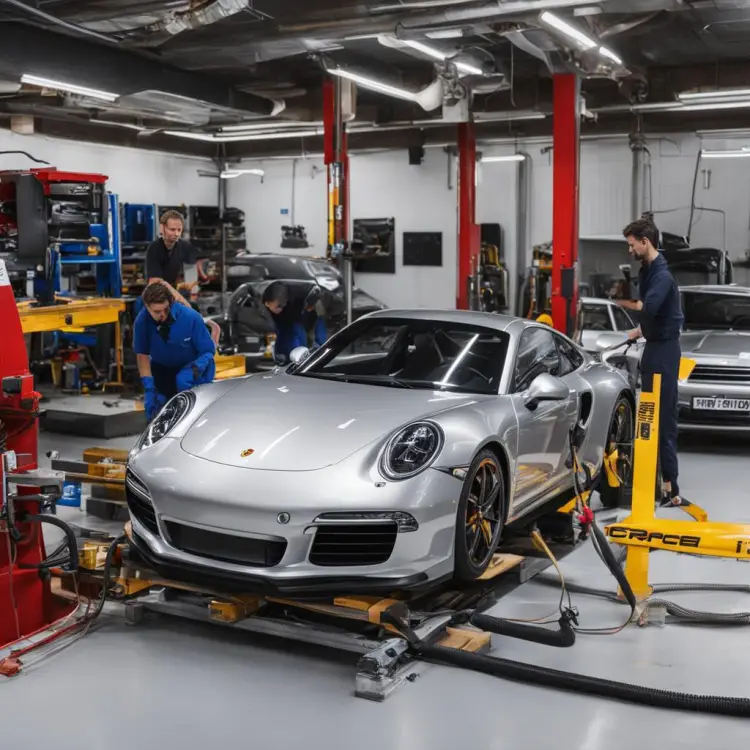
Mastering Porsche 911 Maintenance: How to Keep Your Sports Car Running Like New
Ever dream of owning a Porsche 911? Congratulations, you’ve achieved an automotive dream. But now the real work begins – keeping that sports car running like new. You didn’t buy a Porsche just to let it sit in the garage, did you? No way, you want to get out on the open road and experience the thrill of its power and handling.
The good news is, with some dedication to routine maintenance, your 911 can provide miles and miles of exhilarating driving for years to come. We’re talking oil changes, tune-ups, tire rotations, brake jobs, and everything in between. Yeah, it requires effort and an investment, but what true automotive passion doesn’t?
The great thing is, you don’t have to be a certified Porsche mechanic to keep your 911 in top shape. With some guidance, you can handle much of the maintenance yourself. This article provides an overview of what’s required to master Porsche 911 maintenance. Follow these steps and you’ll ensure your prized 911 provides the performance and longevity expected from such an iconic sports car.
Understanding Your Porsche 911 Maintenance Schedule
To keep your Porsche 911 running like the high-performance machine it was built to be, you’ll need to follow the recommended maintenance schedule. Porsche designs these schedules specifically for your model to ensure optimal performance and reliability.
For most 911 models, you’ll have regular oil changes every 10,000 miles. Don’t skimp here – fresh,
high-quality synthetic oil is vital for your engine. You’ll also want to replace the oil filter at
each change.
Every 20,000 miles, be sure to replace the air and fuel filters. Clogged filters reduce performance
and waste money by forcing the engine to work harder. For maximum efficiency, consider upgrading
to performance air filters.
The 911’s brake pads and rotors need checking every 20,000 miles as well. High-performance brakes
are a must for these powerful sports cars, so replace pads at 25% life remaining. Rotors should be
machined or replaced when uneven or at minimum thickness.
Every 30,000 miles, replace the spark plugs. Fresh plugs optimize the engine’s combustion and prevent
misfires. At 60,000 miles, replace the drive belts and inspect suspension components like control arms
and stabilizer bar links. Worn or damaged suspension parts severely impact handling and safety.
Following the maintenance schedule in your owner’s manual is the best way to keep your Porsche 911
running strongly for years to come. While it may seem expensive, it’s an investment that will pay off
in performance, reliability, and resale value. Keeping records of all services performed will also give
you peace of mind in knowing your sports car is in top condition.
Must-Have Tools and Equipment for DIY Porsche 911 Maintenance
To keep your Porsche 911 in peak condition, you’ll need some essential tools and equipment. Investing in quality gear will save you time, money, and frustration down the road.
Tool Kit
A good tool kit is a must for any Porsche owner. Look for one specifically designed for European vehicles that includes:
- Metric wrenches and sockets in various sizes
- Torx drivers for engine work
- Pliers, screwdrivers, hex keys
- Jack stands for lifting the vehicle
Diagnostic Scanner
A high-quality OBD2 scanner lets you read and clear trouble codes, check emissions readiness, and access live data from your 911’s engine control unit. For Porsches, choose a scanner that supports all 10 OBD2 protocols to ensure compatibility.
Battery Maintainer
To keep your 911’s battery charged during long periods of inactivity, invest in a trickle charger or battery maintainer. Look for a model rated for high-performance batteries that can handle the load.
Touch Up Paint
Minor scratches and chips are inevitable, so keep a touch up paint pen or brush in your 911’s color on hand for quick repairs. Check with your dealer for an exact color match to your vehicle’s paint code.
Microfiber Towels
Ultra-soft microfiber towels are a must for washing and detailing your Porsche. They lift away dirt and grime without leaving behind lint. Stock up on a variety of sizes for engine cleaning, wheel detailing, and general wiping down.
With the right tools and equipment, you’ll be able to handle routine maintenance on your 911 with confidence. Now get out there and put that legendary sports car through its paces!
Most Common Porsche 911 Maintenance Tasks and Costs
Maintaining a Porsche 911 is key to keeping this performance vehicle running like the day you bought it. While servicing a sports car may seem daunting, many of the tasks are quite straightforward if you have some basic mechanical skills. Here are the most common maintenance items you’ll encounter with a Porsche 911 and typical costs.
Oil and Filter Changes
You’ll need to change the oil and oil filter in your 911 every 10,000 miles or once a year, whichever comes first. An oil change will run you between $150 to $300, depending on whether you do it yourself or have the dealership handle it. Be sure to use the specific grade of synthetic motor oil recommended in your owner’s manual for the best performance and engine protection.
Tire Rotations and Balancing
To ensure even tread wear and proper handling, you’ll want to rotate your 911’s tires every 5,000 to 10,000 miles and have them rebalanced at the same time. Tire rotations typically cost between $50 to $100.
Brake Pads and Rotors
High-performance vehicles like the 911 require frequent brake service to remain safe. You can expect to replace the brake pads every 20,000 to 40,000 miles at a cost of $300 to $1,000 per axle, depending on the pad and rotor material. Machining or replacing the rotors will add to the total bill.
Air Filter and Cabin Filter Replacement
Replace your 911’s air filter every 20,000 miles to allow proper airflow to the engine. The cabin filter should be swapped out every 10,000 to 15,000 miles to keep the interior air fresh. Air and cabin filter replacement will set you back around $50 to $150 total.
Battery Replacement
The battery in a Porsche 911 typically lasts 3 to 5 years. When it’s time for replacement, expect to pay between $200 to $500 for a new high-performance battery that meets Porsche’s specifications. Neglecting to replace an aging battery can leave you stranded with a no-start situation.
Keeping up with the routine – and vital – maintenance on your Porsche 911 may require an investment, but will reward you with many miles of exhilarating driving in this world-class sports car. With some basic mechanical skills and the proper tools, you can handle many of these tasks yourself to save on costs. But for the best care of your vehicle, having a trusted Porsche specialist oversee scheduled services is ideal.
How to Change Your Porsche 911’s Oil and Filter
Changing the oil and oil filter in your Porsche 911 is one of the most important things you can do to keep your sports car running strong. Fresh oil is essential for proper engine lubrication and cooling. Replacing your oil filter removes built-up impurities to keep your oil clean.
Follow these steps to perform an oil change on your Porsche 911:
Drain the old oil
Park your Porsche on a level surface and turn off the engine. Allow the engine to cool for at least 30 minutes. Locate the drain plug under the car—it will typically be on the bottom of the oil pan. Place a pan underneath to catch the drained oil. Loosen and remove the drain plug using a socket wrench. Allow the oil to drain from the engine into the pan.
Replace the oil filter
Find the oil filter canister, typically near the oil drain plug. Loosen and remove the canister by hand or using an oil filter wrench. Apply a thin coat of new oil to the rubber gasket on the new filter. Screw on the new filter by hand until it is snug.
Refill with new oil
Replace the drain plug and tighten securely with the socket wrench. Locate the oil filler cap on top of the engine, typically near the valve cover. Remove the cap and pour in the new oil through the opening using a funnel. Pour in the recommended amount of new oil for your Porsche’s engine. Start with about 4 to 5 quarts.
Check the level and start the engine
Wait a few minutes for the oil to drain down to the oil pan. Check the dipstick to ensure you have the proper level of oil. Add oil as needed. Start the engine and check for leaks. Let it run for a few minutes. Shut off the engine and recheck the oil level with the dipstick. Add oil as necessary. Replace the oil filler cap.
Reset the indicator light
In your Porsche’s instrument cluster, find the oil light or “inspection” indicator. Press and hold the button to reset the light, indicating your new oil change. This will start the countdown until your next recommended oil change.
Performing regular oil changes every 5,000 to 10,000 miles will help keep your Porsche 911 running like new for years to come. Fresh, high-quality oil and a clean filter are two of the best things you can provide for your sports car.
Maintaining Your Porsche 911’s Cooling System
To keep your Porsche 911 running like the day it left the factory, maintaining the cooling system is essential. The cooling system circulates coolant throughout the engine to prevent overheating, so it’s important to check it regularly and replace parts when needed.
Coolant level
Check your 911’s coolant level at least once a month to make sure it’s in the normal operating range. The coolant overflow tank can be found on the passenger side of the engine bay. When the engine is cold, the level should be between the “min” and “max” lines on the tank. If it’s low, refill with a 50/50 mixture of distilled water and antifreeze coolant.
Hoses and clamps
Inspect the radiator hoses and clamps for any signs of cracking, bulging or corrosion. The hoses circulate hot coolant from the engine to the radiator, so worn or damaged hoses can burst, causing rapid loss of coolant. Replace hoses every 4-6 years as preventative maintenance. Ensure all hose clamps are tight to prevent leaks.
Water pump
The water pump circulates coolant through the engine. If it’s failing or has failed completely, you may notice overheating, coolant leaks, or noise from the pump. Have the water pump tested or replaced if there are any signs of malfunction. It’s best to replace the water pump every 60,000 to 100,000 miles as preventative maintenance to avoid it failing unexpectedly.
Radiator
Have your radiator pressure tested for any leaks or damage if you notice the temperature gage reading higher than normal or your 911 overheating frequently. The radiator cools the coolant before it re-circulates through the engine. If it’s not functioning properly, it will reduce the engine’s ability to stay at the proper operating temperature. Replace the radiator if it fails the pressure test or every 150,000 miles as preventative maintenance.
Keeping a close eye on your Porsche 911’s cooling system components and performing regular maintenance and replacements when needed will help ensure your sports car continues running smoothly for years to come. Be sure to check with your owner’s manual for the recommended service intervals for your specific model year.
Important Tips for Porsche 911 Brake Maintenance
To keep your Porsche 911 running strong for years to come, proper brake maintenance is essential. Here are some important tips to keep in mind:
Perform regular inspections. Check your brake pads, rotors, calipers and brake lines regularly for signs of wear or damage. As a general rule, have the brakes inspected every 10,000 to 15,000 miles. Look for things like squealing or grinding noises when braking, vibration when braking, or the brake pedal pulsating or feeling loose. If you notice any issues, have the brakes checked by a certified Porsche mechanic right away.
Replace brake pads on time. The brake pads are what actually make contact with the brake rotors to slow and stop your Porsche. As the pads wear down over time and use, they become less effective. Most Porsche owners need to replace their brake pads every 20,000 to 60,000 miles depending on driving conditions and style. Don’t wait until the last minute – worn out pads can damage the rotors.
Resurface or replace rotors when needed. The brake rotors are the disks that the pads clamp down on. Over time, the rotors can become worn down, warped or grooved. If the rotors become damaged or worn down too far, they won’t work properly with new brake pads. It’s often a good idea to resurface or replace the rotors when installing new brake pads.
Flush the brake fluid regularly.
Brake fluid is hygroscopic, meaning it absorbs moisture over time. Excess moisture in the brake fluid can lead to a spongy brake pedal feel and reduce braking effectiveness. Have the brake fluid flushed and refilled according to Porsche’s recommendations, typically every 2 years or 20,000 miles.
Follow these tips to keep your Porsche 911’s brakes in top shape. Well-maintained brakes are crucial for safe driving and maximum performance from your sports car. Don’t neglect them!
Keeping Your Porsche 911’s Suspension in Top Shape
Keeping your Porsche 911’s suspension in top working order is key to an enjoyable driving experience. The suspension system controls how your vehicle handles bumps and turns, so it’s important to inspect it regularly and perform maintenance as needed.
Tire rotation and balancing
Rotating your tires means moving them to different positions on the axles, which helps them wear more evenly. Have your tires rotated every 5,000 to 10,000 miles. While the tires are off, have them balanced to ensure they spin smoothly. Unbalanced tires can cause vibrations that reduce handling and stability.
Wheel alignment
If your Porsche 911 is pulling to one side or vibrating at high speeds, the wheels may be out of alignment. Have the alignment checked at least once a year or if you notice any handling issues. Wheel alignment ensures your tires are pointed in the optimal direction for steering, braking, and stability.
Shocks and struts
The shocks and struts control how your suspension reacts over bumps and during turns. Have them inspected once a year or if your 911’s ride seems bouncy or uneven. Worn out shocks and struts can reduce handling precision and stability.
Control arms and bushings
The control arms connect the wheels to the frame and allow them to move vertically. Bushings are rubber pieces that reduce noise and vibration. Have both control arms and bushings checked if you notice clunking noises when turning or driving over bumps. Worn parts should be replaced to maintain safe handling and a comfortable ride.
Coil springs
Coil springs absorb impacts and keep the vehicle at the proper level. Have your Porsche 911’s coil springs checked if the ride height seems uneven or handling seems off. Worn out springs will need to be replaced to restore proper suspension function.
Keeping a close eye on your Porsche 911’s suspension components will help ensure it continues to deliver an exceptionally dynamic driving experience for years to come. Performing regular inspections and maintenance, along with replacing worn parts when needed, is the best way to keep your sports car running like new.
Detailing and Caring for Your Porsche 911’s Exterior
To keep your Porsche 911 looking showroom new, regular detailing and exterior care is a must. Here are some tips to properly maintain your sports car’s appearance:
Wash and wax
Aim for a wash and wax every few weeks, or at least once a month. Use a high-quality car wash soap and wax or sealant designed specifically for luxury or sports vehicles. Wash your 911 by hand using microfiber mitts, paying extra attention to door jambs, trim pieces and wheels where dirt and grime can build up. Clay bar the paint at least once a year to remove any bonded contaminants before waxing. Waxing or sealing will protect the paint from environmental damage and keep your 911 shining like new.
Wheels and tires
Those stylish alloy wheels and high-performance tires deserve care too. Use a degreaser to remove built-up brake dust and grime. For stuck-on dirt, create a paste from water and baking soda and scrub with an old toothbrush. Rinse wheels thoroughly when done. Treat your tires to a tire shine or dressing to restore the deep black color and protective coating. Reapply as needed to prevent drying and cracking.
Glass and trim
Don’t forget the windows, headlights, taillights and trim. Clean glass inside and out with a quality glass cleaner or isopropyl alcohol and microfiber cloths. For stubborn water spots or hard water stains on windows, use a razor blade scraper very carefully at a 45-degree angle. Use a plastic restore product on headlight covers to remove haziness and prevent future damage. Treat unpainted trim pieces, grilles, and accents with a UV-protectant trim shine or restorer.
Keeping your Porsche 911 clean and detailed regularly will help maintain its appearance and value over time. While it does require an investment of your time, the results will be well worth it when your sports car continues to turn heads as if brand new. Keeping your 911 in showroom condition with frequent washes, waxes, wheel care and trim restoration will give you pride in ownership for years to come.
Porsche 911 Maintenance FAQs: Your Top Questions Answered
Porsche 911s are renowned for their performance and handling, but keeping your sports car running at its best requires diligent maintenance. Here are the answers to some of the most frequently asked questions about maintaining a Porsche 911.
How often should I change the oil in my Porsche 911?
For most driving conditions, Porsche recommends changing your 911’s oil every 10,000 miles or once a year, whichever comes first. If you drive your 911 hard on the track or in extreme heat, you may need to change the oil more often, around every 5,000 to 7,500 miles. Be sure to check your owner’s manual for the recommendation specific to your model year and engine.
Yes, Porsche 911 engines are high-performance and require premium unleaded gasoline with an octane rating of at least 91. Porsche recommends using gasoline with 95 octane or higher for the best performance and to prevent engine knocking. Using regular unleaded gas can reduce power and damage the engine over time.
How often should I rotate the tires on my Porsche 911?
Tire rotation helps your 911’s tires wear evenly and last longer. Porsche recommends rotating your 911’s tires every 10,000 miles. The typical rotation pattern is moving the front tires to the rear axle and the rear tires to the front axle. Staggered setups and directional tires may require a different rotation pattern, so check your owner’s manual for details on your specific 911.
Do I need to replace the brake pads more often on a Porsche 911?
Yes, the high-performance brakes on a Porsche 911 experience more wear and require more frequent replacement of brake pads. Porsche recommends inspecting your 911’s brake pads every 20,000 miles and replacing them if there is less than 1/4 inch of material left. For most 911 models, you can expect to replace the front brake pads every 30,000 to 60,000 miles depending on your driving style and rear brake pads every 20,000 to 40,000 miles.
Following the recommended maintenance schedule in your Porsche 911’s owner’s manual is the best way to keep your sports car running like new for miles to come. Don’t hesitate to contact your Porsche dealer’s service department if you have any other questions about properly maintaining your 911.
Conclusion
So there you have it, everything you need to know to keep your Porsche 911 in peak condition. If you follow this guide, stay on top of the routine maintenance, address any issues early, and care for your vehicle with patience and love, your 911 will continue to thrill and excite you for years to come. These cars are built to high performance standards, but they still need care and feeding. Now go take your baby out for a spin, you’ve earned it! Keep the engine singing and the tires squealing, just don’t forget to check those oil levels when you get back. Master these maintenance fundamentals and your 911 will stay forever young. The open road is calling!


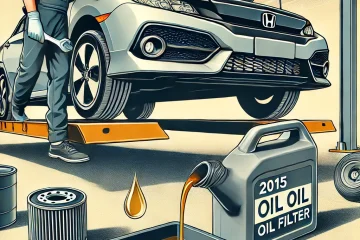
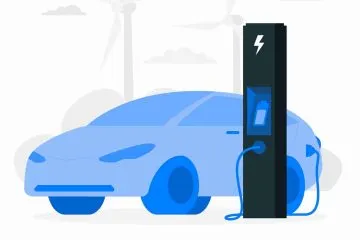





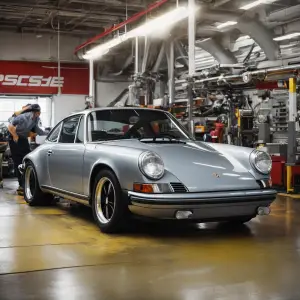
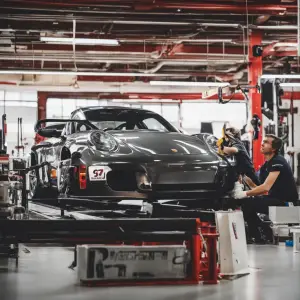
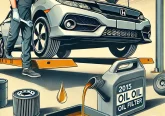




No Comment